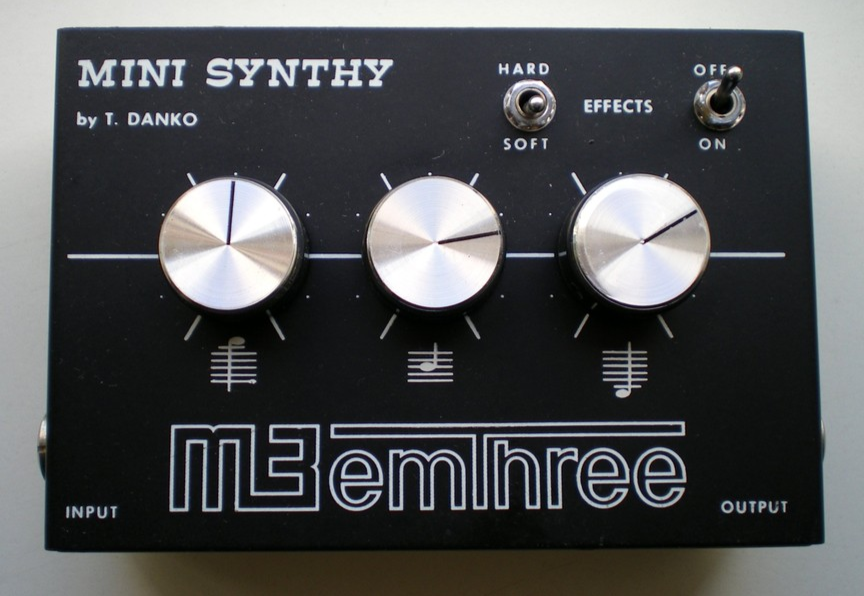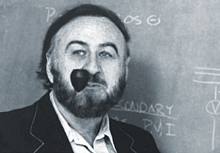A reliable signal is required to drive a loudspeaker. A PC can be configured for this purpose and the knowledge about this did not come from outer space. PC4uMusic configurations are based on practical knowledge of psychoacoustics. Wikipedia says: Psychoacoustics is the branch of psychophysics involving the scientific study of sound perception and audiology—how human auditory system perceives various sounds. More specifically, it is the branch of science studying the psychological responses associated with sound (including noise, speech, and music). Psychoacoustics is an interdisciplinary field of many areas, including psychology, acoustics, electronic engineering, physics, biology, physiology, and computer science.
The Swedish Wikipedia also says: Perceived loudness is an important concept in psychoacoustics. The perceived loudness cannot be described using only linear filtering, as there is a built-in loudness dependence in the equal hearing level curves, as well as the influence of masking effects. Therefore, a good name for the PC4uMusic setup effects might be AmpDoc PC. It refers to the internship from years ago in the Stockholm company of Douglas Westlund and Tomas Danko, who can be seen in the photo. Their company was called Förstarkar Doktor (Amp Doctor). They will introduce many innovative solutions in the Scandinavian music industry, although at first glance they may be associated with the British comedy series The Persuaders!


This company produced a set for guitarists in which 3 ECC 83 triodes were intended for 2 separate inputs, so that they could be set independently for the sound of e.g. Marsall and Fender, and 2x EL 34 pentodes were used to properly drive four 12-inch Celestions. Working on the production of each tube amplifier teaches attention to detail. This practice facilitates the optimal configuration of audio equipment, and the question of secondary importance is whether it is tubes or transistors, or analog or digital technologies.
The tube amplifier was created in direct reference to the innovative synthesizer for guitarists. The copyright to it was owned by a young engineer and musician, Tomas Danko. As a beginner trader, he sold them to the Italian company Meazzi, which had been operating since 1946, producing and distributing equipment for musicians. Their offer included guitars, electronic organs, percussion instruments and amplifiers.
The first prototype of a tube amplifier caused much confusion with its name at the music fair in the United States. It was only about 9 setting options, but it was perceived differently. In production, the first letter and the wooden casing were changed. On the American market, expensive wood with a delicate shine is more impressive, but on the Scandinavian market, pine traditionally sells well. The offer was planned for jazz musicians, but was extended to rock musicians and for them the original name could be even more attractive.

This Stockholm company also had a Swedish representation of percussion instruments, including: American Ludwig, which have been produced since the beginning of the 20th century, and Tama, a Japanese company founded in 1908. Douglas Westlund was a session musician and always tuned various drum kits himself, which he presented to interested music store owners. Famous drummers came to him even more often for advice. On this occasion, the sound of his perfectionist drum kits became a reference point in the company - which should be ensured by the stage sound system, both for jazz and rock. In the second case, you usually only need more sound equipment to reach a larger group of listeners. Distorted electric guitar sounds are not the job of a PA system.
It was also possible to rent PA equipment there for concerts, with e.g. Cerwin Vega PA speakers. The name of this brand is an Americanized abbreviation of the name of Eugene J. "Gene" Czerwinski , who was a professor of psychoacoustics and contributed to breaking the sound barrier in aviation. Already in the 1950s, its loudspeakers could generate 130 dB at very low frequencies, which enabled many tests important for aviation to be carried out on the ground, with unlimited access to measuring equipment.


The professor viewed sound reproduction as energy generation. The heat generated had to be dissipated to avoid distortions. Thanks to this, his solutions also enabled real sound reproduction in cinemas for showing disaster films. The first one was titled Earthquake, which in 1975 received 2 Oscars for best sound and special effects and 3 nominations. The next one was "The Towering Inferno", which won 3 Oscars and 5 other awards and 14 nominations.
Disco speakers brought another success. We used B-36A and D-32 speakers, which we modified in Stockholm for PA purposes.The American producer duplicated these modifications and The Rolling Stones were the first to use it during their tour. The concepts of these modifications have remained unchanged for decades, with only minor changes being made to suit the needs of marketing activities and the term 4-way system is used.
The new counterparts are the L-36 PE and D-32D, but this set does not include a modification that was once crucial. The advantage of the set was that in the B-36A the audience could not damage the electroacoustic transducer. There was no such comfort for the two 12-inch ones in the D-32. Appropriate protection has been installed in Stockholm, which is not available in the D-32D. Mechanical damage is a very serious problem at concerts in smaller venues, which the American manufacturer does not seem to take into account. The old D-32 had a very stable mid-band solution, and the newer one is cheaper. Here, they were probably guided by trends in home audio with phase distortions, and not by what is important in a PA sound system.
The brand's good reputation attracted new investments. The offer was aimed at tend disco. This was during the golden age of hi-fi and their speakers quickly became popular in homes as well. However, the competition in the RTV market is huge. This resulted in an attempt to adapt and attract customers interested in the cheaper segment. As a result, they are now associated more with trends than with technological achievements. This brand's speakers may have good components, but now they are attractive for playing music at home.
The American manufacturer of active studio monitors says it has experience with Cerwin Vega. There are many indications that he has already worked with products from Asia that were offered with this brand. These were probably joint activities with the Stanton brand to take advantage of their reputation on the disco market. Fluid has an interesting solution that could help Cerwin Vega become an attractive brand again, but it does not have any technological innovation of its own. They are based on what is available from other brands and it is difficult to compete with it on the RTV market.
Technical solutions change and practical knowledge of sound systems is needed. British proposals for new 4 ch surround in Windows are about an interesting alternative with Microsoft's digital capabilities and with a traditional analog connection. So the sound can be distributed evenly in the room. The amplifier power in each Tannoy Gold speaker is sufficient to avoid clipping.
The name Tannoy is a British English synonym for a PA system, because good equipment with this brand and innovative solutions have been offered since the 1940s. Now finding their products in hi-fi stores can be difficult. However, they are available in music stores, and these sell online.















The Stanton brand was created based on the works of Norman C. Pickering
ReplyDeletehttps://en.wikipedia.org/wiki/Norman_C._Pickering
The Cerwin-Vega dynasty continues with the acquisition by “The Stanton Group of companies”. We are looking forward to another 50 years of staying on top in the audio business with products that are worthy of the Cerwin-Vega heritage.
Deletehttps://www.cerwinvegasweden.se/history/
https://en.wikipedia.org/wiki/Stanton_Magnetics
DeleteStanton Magnetics was founded in 1946 by Norman C. Pickering as Pickering Associates, Inc., the parent corporation of Pickering & Company, with a focus on products for the professional broadcast and recording industries. Walter O. Stanton joined the company as vice president in charge of sales in 1948, helping the company develop the first cartridge for the new microgroove standard for vinyl records, and succeeded Pickering as president in 1950. In 1961, recognizing the growth of Pickering & Company's consumer market, Stanton established the Stanton Magnetics brand to focus on professional broadcast and recording products.
In 1954, Gene Czerwinski, then a brilliant young aerospace engineer, founded Cerwin-Vega. Why start a loudspeaker company? First and foremost a music fan, Gene’s goal was to reproduce the live musical experience. His design philosophy was based on high-efficiency drivers, durability, and a “value for money products.”
ReplyDeletehttps://www.cerwinvegasweden.se/history/
Fluid Audio was founded by loudspeaker engineer, guitarist, and recording enthusiast Kevin Zuccaro. Starting with his first job at JBL in 1990, Zuccaro developed a passion for audio and learned speaker development from the ground up. Working on speaker drivers, hi-fi systems, and cinema projects gave him a well-rounded approach to speaker design.
ReplyDeleteJun 1998 - May 2006 Senior Design Engineer. KRK, Stanton, Cerwin-Vega
https://www.soundonsound.com/reviews/fluid-audio-f4
DeleteFluid Audio were founded by former JBL engineer and recording enthusiast Kevin Zuccaro. After a subsequent spell at Cerwin Vega working on hi-fi products, he moved on to managing Avid’s monitor division, designing their M-Audio monitors. In 2011, he left Avid to set up Fluid Audio. Kevin is the first to concede that monitor design is always a compromise between price and the technology that you would ideally use if price was not an issue. He tells us his approach is to look at each element in a monitor to see how it can be made to perform as well as possible at a specific price point, paying attention, not only, to voicing, but also to the design of the amplifiers, the port tube and the tweeter waveguide.